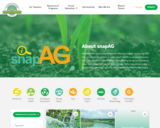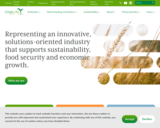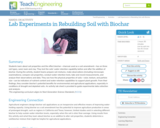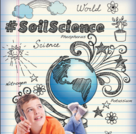
Students will explore food groups and healthy food choices.
- Subject:
- Agriculture Studies
- Science
- Material Type:
- Activity/Lab
- Lesson
- Provider:
- Iowa Agriculture Literacy Foundation
- Author:
- JoAnn Blair
- Date Added:
- 10/11/2018

Students will explore food groups and healthy food choices.

In this interactive, learners develop the skills to handle a horse safely before entering the corral for the first time. The interactive consists of three stages, each explaining an aspect of the safety procedures necessary for leading a horse.

Students will be able to connect their knowledge of pH to real life agricultural applications, and understand the importance of pH requirements for Iowa crops.

Introduce students to biodiesel, ethanol, and biomass in terms of agricultural and societal importance, while strengthening students’ research and technical writing skills.

Journey 2050 allows schools around the world to experience agriculture like it has never been taught before. As students explore world food sustainability, they make inquiry-based decisions to see the ripple effect on social, economic and environmental factors locally and globally. Agricultural experts and real farm families from Kenya, India and Canada guide students through a virtual farm simulation, avatar career game and geography scavenger hunt.

October is agriculture month and a time to highlight our connection to food and the role that agriculture plays in the lives of Saskatchewan people and our students! This year’s theme is #MealsFromtheFarm.If you are interested in incorporating food or agriculture into your lessons this month, have your students enjoy some fun and learning with these "Meals From The Farm" Kahoots from Farm and Food Care Saskatchewan!

SnapAG is a series of resources that invite students to explore the hot topics affecting the agriculture industry today. Topics range from organics, biotechnology, GMOs, livestock, careers and more.

Visit an egg farm without leaving the comfort of your own classroom or home! Join our team on a tour of the MEGGFarm, and experience what it is like to visit a local egg farm. You'll learn all about eggs and egg farming by completing the viewing guide and examining the accompanying resourecs.

The #MyFoodChoice resource is an inquiry-based resource answering the overall question of "How can I make informed food choices?" This resources has videos, interactive student sheets, approved resources and more. It is aimed at grade 9-12 students in subjects such as science, food studies, English, agriculture, social studies, humanities to name a few.

Students will learn plant, seed, and flower parts and their functions.

"Canadians have more choices and pay some of the lowest prices in the world for FOOD — thanks in part to the plant science technologies farmers use, from pesticides to plant biotechnology."
Use this resource to learn more about food.

This is a resource for teachers that explores sustainability, agriculture policy, current issues and more!

Students learn about soil properties and the effect biochar—charcoal used as a soil amendment—has on three soil types, sand, loam and clay. They test the soils’ water retention capability before and after the addition of biochar. During the activity, student teams prepare soil mixtures, make observations (including microscopic examinations), compare soil properties, conduct water retention tests, take and record measurements, and analyze their observations and data. They see how the physical properties of soils—color, texture, and particle size—can be indicators of nutrient content and water retention capabilities to support plant growth. From their findings, they consider biochar’s potential benefits for environmental and agricultural applications, especially in conditions of drought and depleted soils. An activity lab sheet is provided to guide experimental data collection and analysis.

The objective of this lesson would be to make the students aware of the renewable fuels available for their own homes.

Over the course of three sessions, students act as agricultural engineers and learn about the sustainable pest control technique known as soil biosolarization in which organic waste is used to help eliminate pests during soil solarization instead of using toxic compounds like pesticides and fumigants. Student teams prepare seed starter pots using a source of microorganisms (soil or compost) and “organic waste” (such as oatmeal, a source of carbon for the microorganisms). They plant seeds (representing weed seeds) in the pots, add water and cover them with plastic wrap. At experiment end, students count the weed seedlings and assess the efficacy of the soil biosolarization technique in inactivating the weed seeds. An experiment-guiding handout and pre/post quizzes are provided.

Students will compare three types of groundcover to see which provides the best defense against soil erosion.

This resource offers a more intermediate level dive into soil science. It includes topics like soil organisms, nutrient cycles, and responsible use of fertilizers.

Students will understand the law of supply and demand and how it affects the cost of goods and services. Students will use the law of supply and demand to explain why the market price of crops and livestock fluctuates.

TED Studies, created in collaboration with Wiley, are curated video collections 逖 supplemented by rich educational materials 逖 for students, educators and self-guided learners. In Reworking the Western Diet, speakers examine how that diet 逖 processed, high in refined sugars, and heavy in corn, soy, meat and dairy 逖 is making us and the environment sick. These TED Talks blaze the trail to sustainable farming and a more sensible diet.迨

Students gain familiarity with the processes of raising and creating alternative renewable materials for fuel, specifically ethanol.